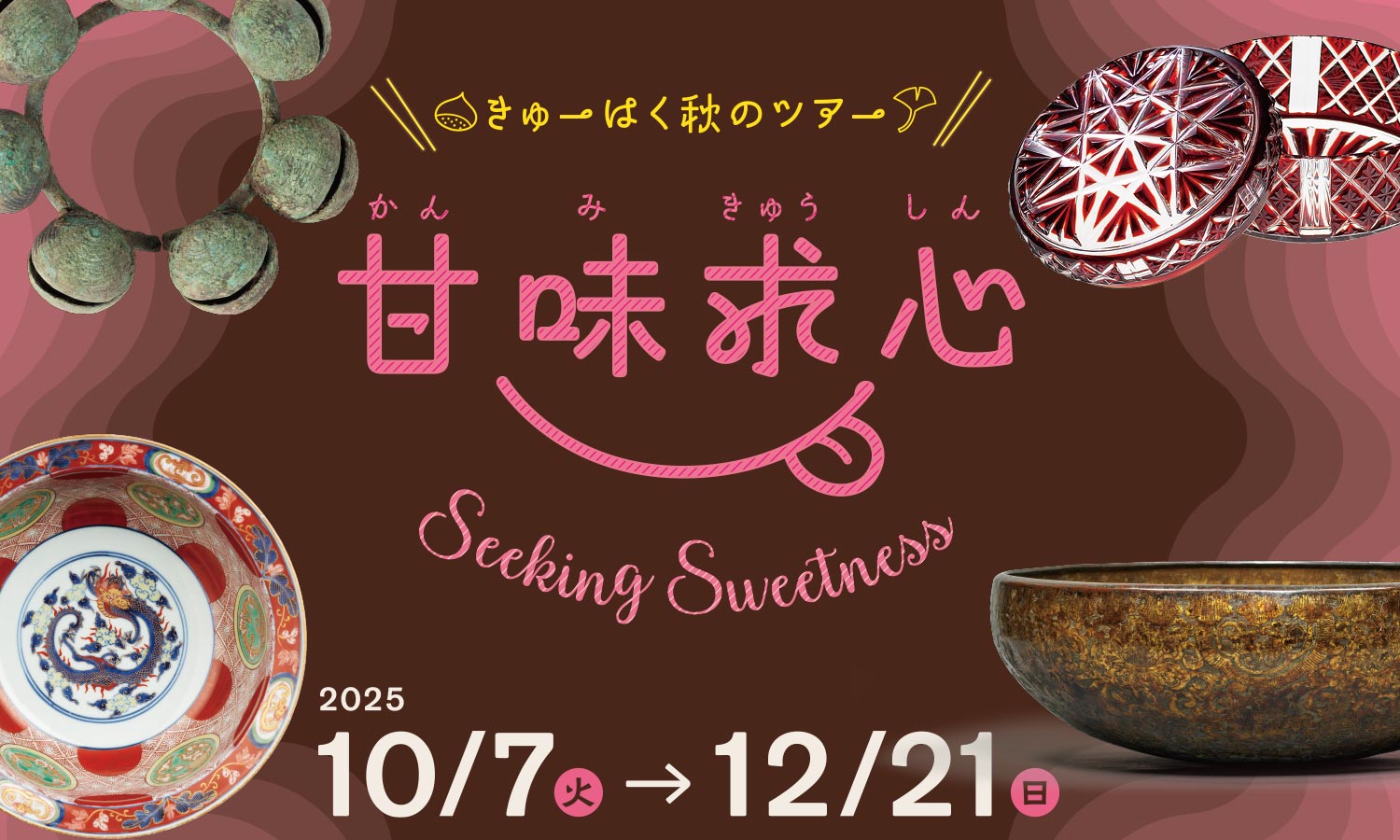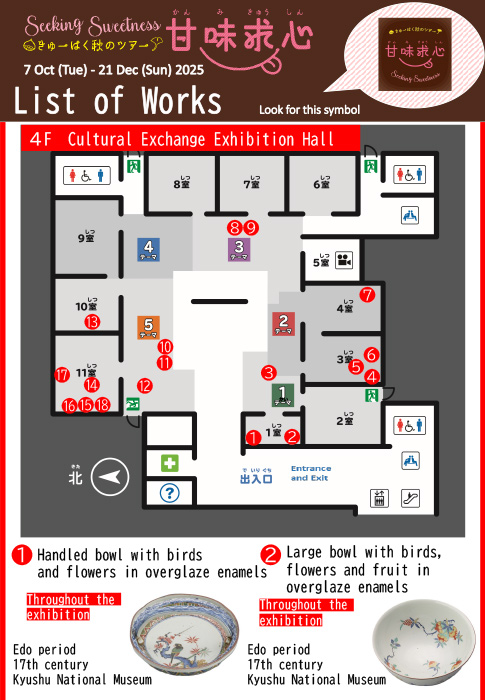Kyuhaku Autumn Tour:
Seeking Sweetness
As the season turns from summer to autumn, our cravings for sweets grow ever stronger.
We invite you to stroll through our exhibitions on this specially curated Autumn Tour, featuring
boundary-defying works spanning a variety of disciplines.
Join us as we explore the themes of “sweetness” and “sweets” through arts and crafts,
archaeological finds, and historical materials related to confectionery and sweets.
Look out for items in a variety of shapes and colors that might just remind you of your favorite
dessert!
Exhibition Period: |
|---|
7 October (Tue) – 21 December (Sun) 2025 |
Venues: |
|---|
Cultural Exchange Exhibition Hall (4F) and Ajippa (Interactive Exhibition Gallery, 1F) |
Tickets Cultural Exchange Exhibition Hall (Permanent Exhibition) |
|
|---|---|
| Adults | 700 yen |
| University students | 350 yen |
| High school students, visitors under and seniors over 70 Free of charge | |
* For more information on ticket prices, please refer to this page.
List of Works |
|---|
Exhibition Highlights: Cultural Exchange Exhibition Hall (4F)

Large bowl with fruit in overglaze enamels
Edo period, 17th century
Kyushu National Museum
Decorated in overglaze enamels, this large bowl features peaches, pomegranates, and a fingered citron known as “Buddha’s hand.” Fruits such as these offer sweetness anytime.

Bracelet with bells
Bronze Age to Iron Age, 3rd century BCE–2nd century CE
Kyushu National Museum
This bracelet is from Ban Chiang, a culture that flourished in northeastern Thailand about 2,000 years ago. Doesn’t its shape remind you of a certain donut??

Three-tiered cut-glass box (confectionery container)
Edo period, 19th century
Kyushu National Museum
This cut-glass box was handed down through the Shimazu family, feudal lords of Satsuma. Ink inscriptions on the box reveal that it was used as a confectionery container.

Tenjin visits Tang China
By Sengai Gibon
Edo period, 19th century
Genjūan Temple, Fukuoka
Here is an ink-wash painting of Tenjin, the deified form of
Sugawara no Michizane, dressed in Chinese attire and holding a
plum branch. The inscription reads:
“Told to receive it,
A plum branch adorns my sleeve
Like a round rice cake.”
This is the origin story of umegae mochi, a special
Dazaifu
sweet.

Omanjū Dokoro sign
Meiji to Showa era, 20th century
Jōtenji Temple, Fukuoka
The monk Enni (1202–80) founded Jōtenji Temple in Fukuoka. He is said to have taught a Hakata teahouse proprietor how to make manjū, the red-bean-filled cake he had eaten in Song-dynasty China. Enni also wrote the shop sign for him. This is a replica of that sign; the original is held by Toraya, a confectioner famous for its yōkan (sweet red bean jelly).
Exhibition Highlights: Ajippa (1F)

Mold for making sweets (Korea)

Mold for making sweets (Holland)
Among the exhibits you can see at Ajippa are implements and containers related to sweets. What ingredients do you think were used to create these delicious treats? Be sure to look at their adorable shapes too!
Events
観覧無料・販売あり
Sugar Island Kyushu Sweets Festival in Dazaifu
1) The Museum of Sweets by Artist Osamu Watanabe
2) Japan Heritage Sugar Road & Confectionery Festival


